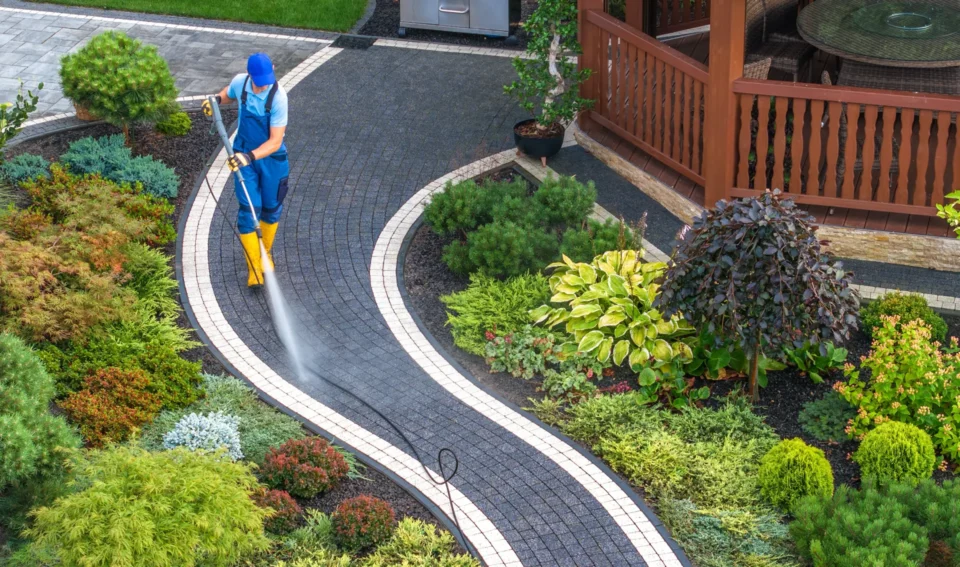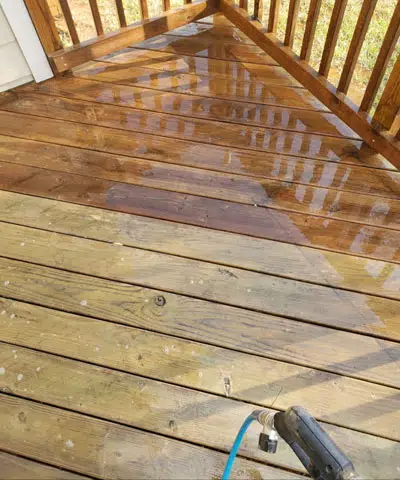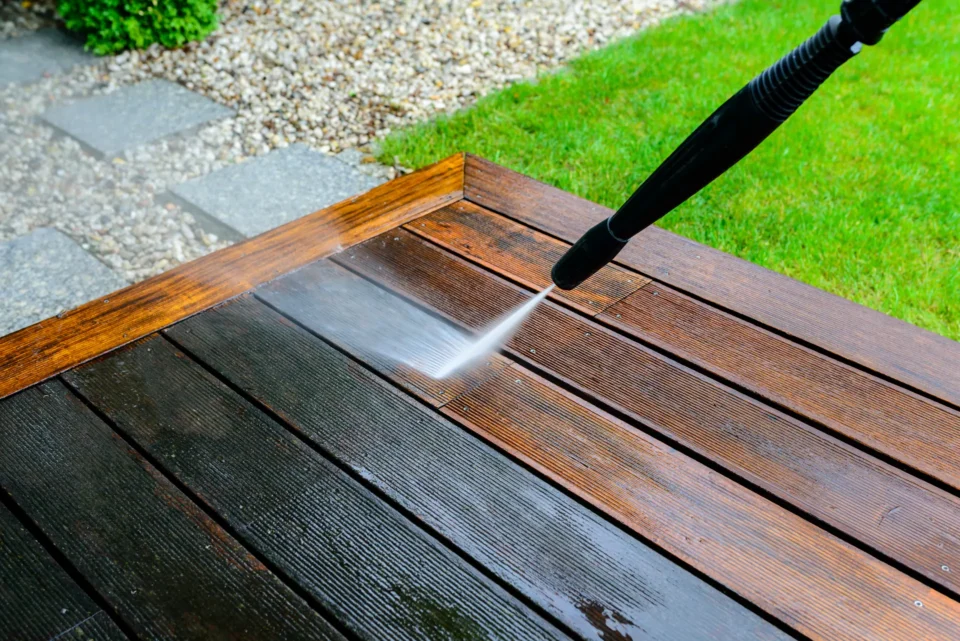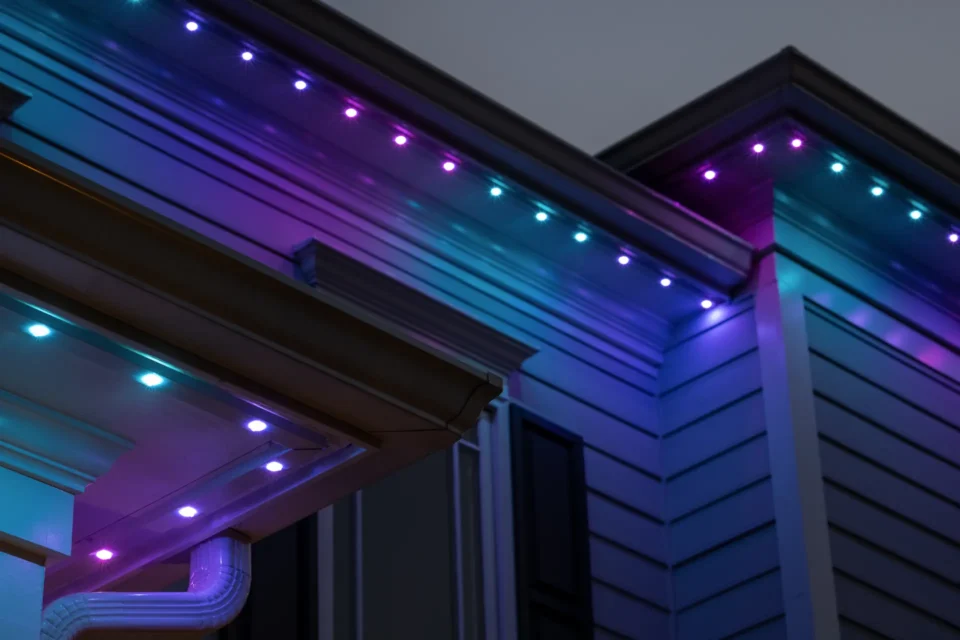If you’re a pool owner, you know that keeping your pool deck pristine can be a challenge. No matter how much you clean or maintain it, you’re bound to encounter that unpleasant greenish-black discoloration that seems to appear out of nowhere.
But is it mold? Or is it algae? While both can wreak havoc on the look and safety of your pool deck, they have different causes and effects, and the methods to deal with them vary. Understanding the difference between mold and algae is crucial in tackling this issue head-on.
How Can You Tell the Difference Between Mold and Algae on a Pool Deck?
It might seem like a simple question—what’s the difference between mold and algae? But when it comes to your pool deck, understanding the distinction can help you choose the right solution for both prevention and treatment. While both mold and algae thrive in damp, shaded environments, their appearance, causes, and methods of removal vary.
Mold: The Sneaky, Spreading Foe
Mold is a type of fungus that grows in damp, moist environments. When mold grows on your pool deck, it typically appears as black or dark green spots, often in areas that are constantly wet, such as around the pool edge, in the corners, or where water tends to accumulate. Unlike algae, mold can spread and penetrate deeper into the material of your pool deck, potentially causing damage to surfaces like concrete or wood.
Mold often has a fuzzy or slimy texture and can appear in irregular patches that might seem to grow over time. The most noticeable feature of mold is its musty, earthy smell. If you detect this unpleasant odor around your pool deck, it’s a strong sign that you might be dealing with mold.
Algae: The Slimy Green Invader
Algae, on the other hand, is a type of plant that grows in water. When algae infest your pool deck, they often appear as slimy green or yellowish patches. Algae growth is typically more visible in areas with high exposure to sunlight but can also grow in shaded, wet areas. The texture of algae is more slippery than mold, and it tends to be slimy and slippery underfoot, making your pool deck potentially hazardous.
While algae are generally surface-level growths, they can spread rapidly and create large, unsightly patches. Unlike mold, algae can sometimes be removed with simple cleaning methods, although prolonged exposure can make it harder to get rid of.
What Causes Mold And Algae to Grow on a Pool Deck?
Both mold and algae thrive in environments that are moist, warm, and not well-ventilated—perfect conditions for any pool deck, especially in humid climates. But let’s break down the specific causes for each growth and why they seem to take over your pool area.
Causes of Mold Growth
- Excess Moisture: Mold loves moisture, and since pool decks are typically wet from splashing water and the humidity around pools, they provide an ideal breeding ground for mold. Areas that stay damp, like pool corners or shaded spaces, tend to foster mold growth.
- Poor Drainage: If your pool deck has poor drainage or standing water around it, mold will thrive. Water that doesn’t drain properly creates a perfect environment for mold spores to take hold and spread.
- Shade and Humidity: Mold grows best in dark, damp conditions. If parts of your pool deck are shaded for much of the day, it can remain wet for long periods, promoting the development of mold.
Causes of Algae Growth
- Sunlight and Humidity: Algae need sunlight and moisture to grow. A pool deck, especially one that’s near the pool and receives a lot of sun, is a prime spot for algae. Humidity also plays a big role, as it keeps the environment moist, which encourages algae to grow.
- Organic Debris: Algae also thrive in areas where organic material, such as leaves or dirt, accumulates. These materials provide nutrients that fuel algae growth. If your pool area has organic debris lying around, it can lead to algae blooms on your pool deck.
- Imbalance in Pool Water Chemistry: Algae in the pool can sometimes migrate to the pool deck if there’s an imbalance in the water chemistry. If the pool water is too rich in nutrients (like phosphates or nitrates), algae can quickly spread and contaminate not just the pool but the surrounding deck area as well.
How Does Mold and Algae on a Pool Deck Impact Your Home?
Mold and algae may seem like a simple nuisance at first, but the truth is, they can have lasting impacts on your home and health if left untreated. It’s essential to address these growths not only for aesthetic reasons but also for the safety of your family and the longevity of your pool deck.
1. Health Risks
Both mold and algae can cause health issues. Mold, in particular, can release spores into the air that can trigger respiratory problems, especially for individuals with allergies or asthma. Inhaling mold spores can lead to chronic coughing, wheezing, and even sinus infections. Algae, though less harmful to your health directly, can also create slippery surfaces, leading to slip-and-fall accidents, especially when it becomes slick and slimy.
2. Structural Damage
Mold can penetrate the surface of your pool deck, potentially causing long-term damage to materials like concrete, wood, and stone. Over time, mold can break down these surfaces, leading to cracking, deterioration, or even irreversible damage. While algae may not cause the same type of structural damage, it can contribute to the wear and tear of your pool deck if not properly cleaned and removed.
3. Aesthetic Concerns
Both mold and algae create unsightly patches on your pool deck. Mold often appears as dark, irregular patches, while algae typically appears as slimy, greenish discoloration. These stains can be an eyesore, especially when you’re trying to enjoy your pool area or host guests. The longer you let mold and algae grow, the harder they can be to remove, making it even more challenging to restore your pool deck’s original beauty.
4. Decrease in Property Value
If you’re looking to sell your home, mold or algae on your pool deck can decrease the curb appeal and overall value of your property. Potential buyers might be turned off by the unsightly stains and the potential for mold-related health issues. A well-maintained pool deck, free from these growths, adds significant value to your home and increases its attractiveness to prospective buyers.
What are the Best Methods to Remove Mold and Algae From a Pool Deck?
Now that we know what mold and algae are, how they grow, and how they impact your home, it’s time to tackle the big question: how do you remove them?
For Mold
- Use a Mold-Killing Solution: Mold requires a strong cleaner to break down its spores. A mixture of water and bleach is a common and effective solution for mold removal. Mix one part bleach to three parts water and scrub the affected areas with a stiff brush. If you’re not keen on bleach, vinegar can also be effective, although it may not work as quickly as bleach.
- Pressure Washing: For larger areas affected by mold, pressure washing is a highly effective method. The powerful stream of water can help remove mold from concrete and stone surfaces without damaging them. Make sure to adjust the pressure appropriately to avoid harming delicate surfaces.
- Seal Your Pool Deck: Once the mold is removed, consider applying a protective sealant to your pool deck. This will help prevent future mold growth by reducing moisture absorption.
For Algae
- Scrub with Algae Cleaner: Algae can be removed with specialized algae cleaners, which are formulated to break down algae’s slimy texture and remove it from your pool deck. Follow the instructions on the cleaner’s label for the best results.
- Pressure Washing: Like mold, algae can also be removed with a pressure washer, particularly if it has grown on larger areas of your pool deck. Pressure washing can help dislodge the algae without damaging the underlying surface.
- Regular Pool Care: Prevent algae buildup on your pool deck by maintaining the proper chemical balance in your pool. This will help minimize the risk of algae spreading from the pool to the deck area.
- Routine Cleaning: Keep your pool deck free of organic debris, such as leaves and dirt, which can fuel algae growth. Regular sweeping or hosing down the area can go a long way in preventing algae from taking over.
Mold and algae on your pool deck are not just cosmetic issues—they can have lasting impacts on your health, home, and property value. By understanding the differences between mold and algae, what causes them, and how they affect your pool deck, you can take proactive steps to prevent and remove them.
By using the right cleaning methods and maintaining your pool deck, you can keep your outdoor space looking pristine, safe, and enjoyable for years to come. Whether it’s through regular cleaning or seeking professional help, tackling mold and algae growth head-on will ensure that your pool deck remains a welcoming area for family, friends, and guests.
Revitalize Your Pool Deck with Power Clean Pressure Washing
Is mold or algae taking over your pool deck? Don’t let it ruin the look or safety of your outdoor space! At Power Clean Pressure Washing, we specialize in removing stubborn mold, algae, and other unsightly stains from your pool deck, bringing it back to life.
Our expert team uses top-of-the-line equipment and specialized cleaning solutions to ensure your deck looks spotless, without damaging the surface. Whether it’s restoring your deck’s beauty or making it safer to walk on, we’ve got you covered.
Call Power Clean Pressure Washing today to schedule a professional cleaning that will keep your pool area looking pristine all year long. Let us handle the tough stains so you can enjoy your outdoor space without a worry!




